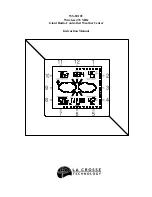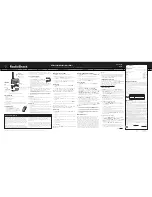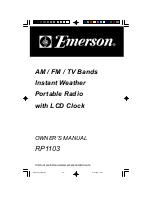
Rear Panel
RF IN (RF 1)
: Main RF input (0.010 - 34.000MHz). Input AC coupled . Do not exceed 13dBm or 25 VDC.
REF
: 10 MHz reference input in units equipped with the REFLOCK module. 0.2 -1.0 Vp-p max (sine,
square, or clipped sinewave) 50-75 Ohm.
IF (RF 2
): Secondary RF in/out port for future upgrades.
AUX STEREO JACK
: Stereo jack for future upgrades.
MODE SELECT (1 or 2)
:
Position 1 after power on: NetSDR sends “RFSPACE NetSDR” in Morse Code.
Position 1 hold 5 seconds after power on: Disables or enables sound.
Position 1 hold 5 seconds during power on: Reset radio to factory defaults (DHCP).
Position 2 after power on: NetSDR announces IP Address and Port in english using internal speaker.
Position 2 hold during power on: Radio Recovery Mode allowing firmware upload via RS-232 port.
ETHERNET
: 100 Base-T ethernet connector. It is the main pipe used to communicate with the NetSDR.
This port can be connected directly to a computer or router. The polarity will be automatically selected so
a crossed cable is not required.
SERIAL
: RS-232 port used to connect the NetSDR to external radios like the Icom IC-R8500 or AOR
AR-5000 receivers. It can be left unconnected in normal operation. Grounding
pin 9 of the RS-232
connector will replace all I/Q data with zeros. This will have the effect of muting the receiver audio. This
will not protect the RF frontend from overload.
USB
: This USB port is for debug and configuration. It will enumerate as a serial port if connected to the
PC. This port will show ethernet commands received to aid in the troubleshooting and software
development. It is not used in normal operation.
DC 5.0V
: Power input connector (2.1 mm). This port is sensed and protected internally. If the voltage is
below 4.75 volts, the unit might not power on and might behave eratically. If the voltage ever exceeds 5.4
volts, the unit will not power on. This is to prevent damage to the internal circuitry.
9
Jan 2012
RFSPACE, Inc.
NetSDR Wideband Digital Radio User’s Guide



































